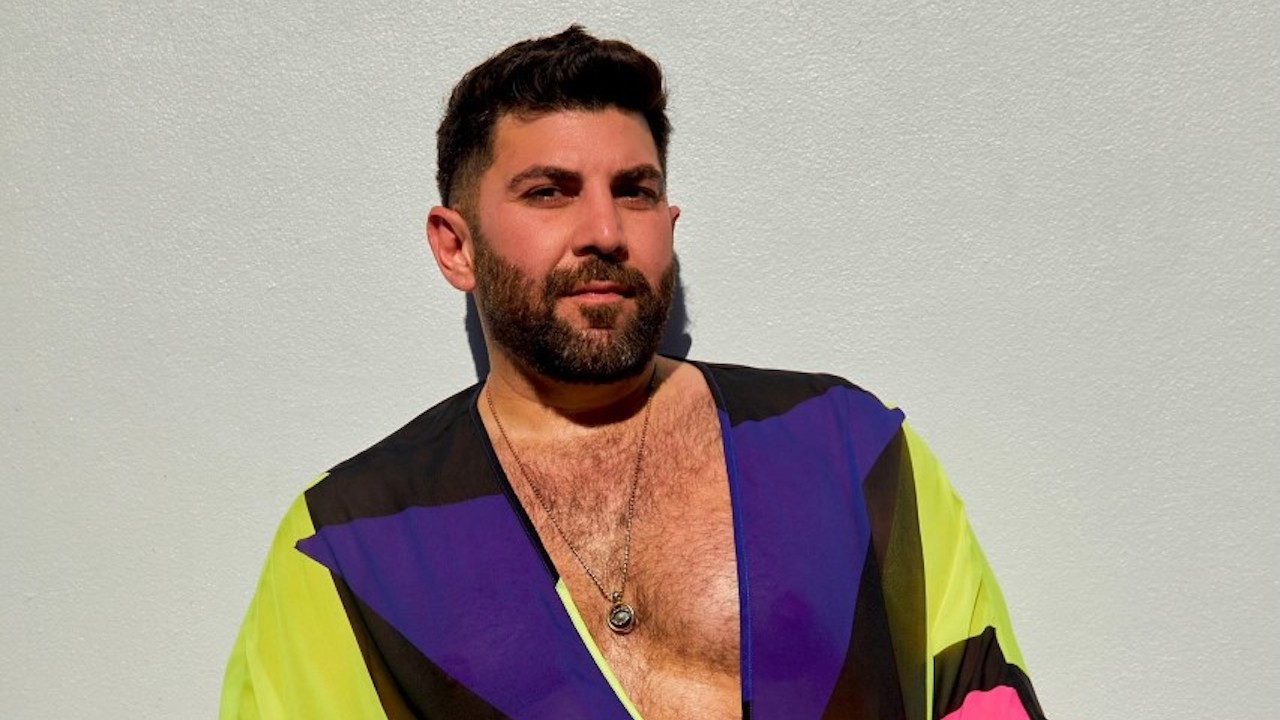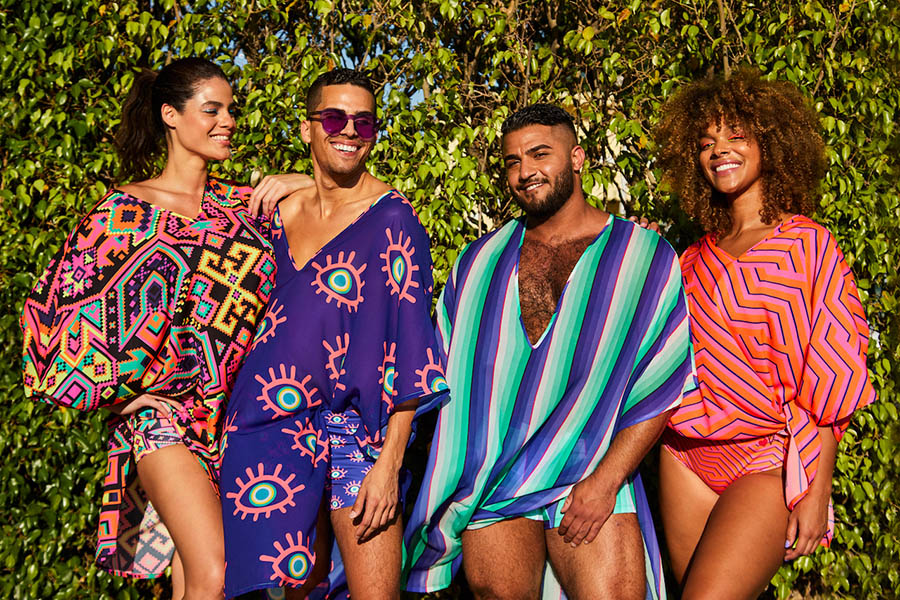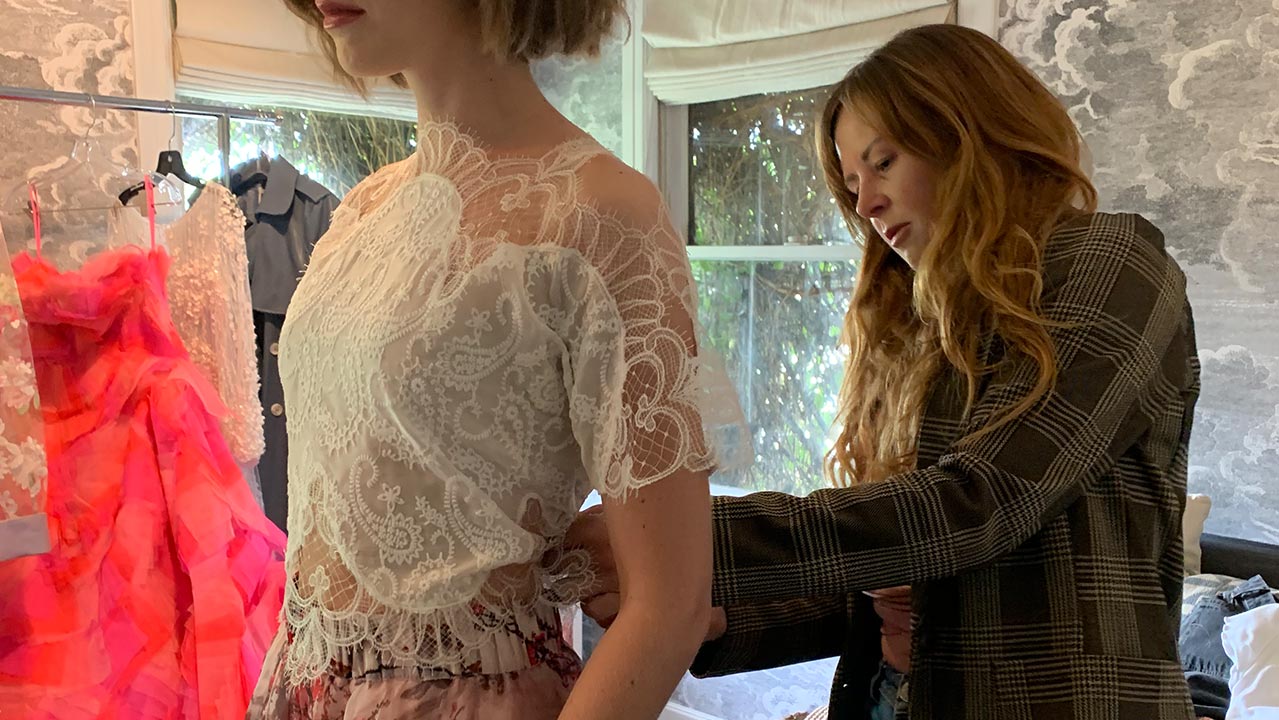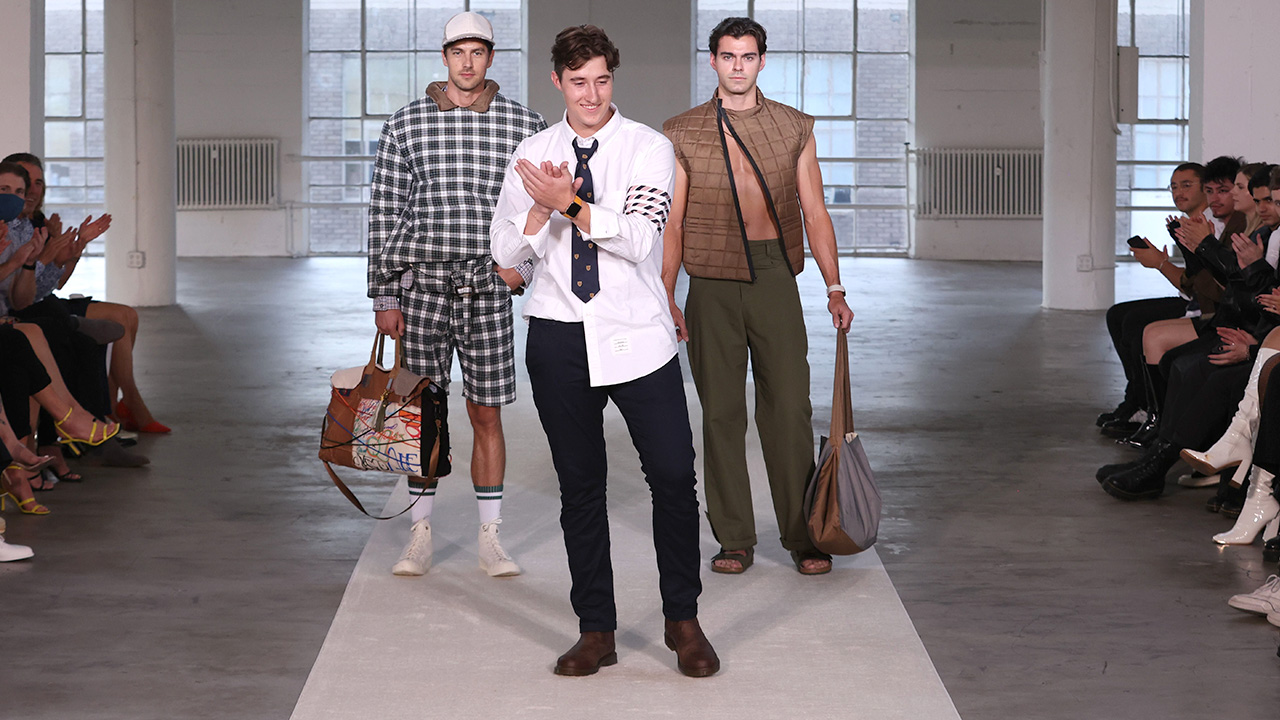
Alumni
Grad Designs Modern Kaftans for All
Born in Anaheim, California, Oday Shakar grew up in Southern California, as well as Baghdad, Iraq and Amman, Jordan. “I knew I wanted to be a fashion designer since the age of 13, and was the first in my family to return to the US for one goal only: to get into a fashion design college,” said Oday, who made that dream come true when he enrolled at FIDM and earned a degree in Fashion Design. After a successful career in luxury womenswear as the designer of his self-titled collection, Oday and his co-founders Dana Quadri and James Adelman launched Kaftko — a collection of colorful and bold printed kaftans designed for all bodies and genders — in 2020. The popular line, which has fans in Billy Porter, Carson Kressley, and Ross Matthews, has been featured in the Los Angeles Times and GQ. We caught up with Oday to learn more about his brand, the history of the kaftan, and inclusive design.
What led you to study Fashion Design? When I was young, living in Baghdad, I would do sketches of women and clothes not knowing anything really about what I was creating. I really just enjoyed it and felt inspired by the amazing women who surrounded me and raised me. My aunt, who had experience in fashion design and illustration, saw some of my drawings and immediately started encouraging me. She saw potential and really was one of the first people to believe in me. She even started teaching and training me to refine my skill. After that, my love for fashion and illustrating grew and expanded. I knew it was exactly what I wanted to do in life.
What were you up to prior to striking out on your own as a designer: My personal claim to fashion fame that surprises people is that one of my first jobs was with Von Dutch. And one of my first designs there was their iconic trucker hat with the Von Dutch insignia. It exploded and then became a humorous reference to early 2000s fashion. In retrospect, the reason this design is significant for me is it speaks to a core piece of how I approach design. Classic steadfast silhouettes and constructions that just need social and contemporary relevance. That's how I created The Original Kaftan for Kaftko. I did not invent the kaftan, but I did make it something else that an entirely new and larger audience can experience and enjoy. It makes for timeless designs. And I have to thank Gen Z for bringing back that trucker hat and making it timeless as well!

Tell us about founding Kaftko and the historic role of the kaftan: I spent a good portion of my childhood growing up in Baghdad, Iraq wearing kaftans everywhere. Culturally and historically, the garments are worn throughout the Arab World. In Iraq, we call them disdashas. In other areas, they call them galabiyas or abayas. They are non gendered loose garments meant to keep people covered but cool and comfortable. I lived in them. It was the first time I actually felt comfortable in my own skin. I thought to myself, "I get to wear a dress? This is great!" As a gay Iraqi-American designer, I always knew I had a story to tell. But I didn't exactly know how all the different parts of me, my identity, my heritage, all things I'm very proud of, would come together.
Kaftko's founding really feels like one of those "the universe has spoken" kind of moments. In retrospect, it definitely came from a very real and passionate place of having an important story to share with the world and working hard in the fashion industry for many years. But at the time, it happened because I really just wanted a kaftan that was something I loved and felt comfortable wearing. I created our first kaftan design for myself. When the sample arrived, it was during the start of the COVID pandemic and it was by no means a sane time to start a business, but my business partners and I decided to order a small inventory for friends who seemed interested. We were all stuck at home in the heart of the New York City outbreak with nothing to do but worry and feel down. The thought of a bright and colorful kaftan just brought a smile to our faces.
When we launched the products on our site, 100 units sold out in 48 hours. We noticed that many customers weren't even people we knew. We knew we found something people were connecting to so we leaned into it. We kept ordering and they kept selling out. When I took a moment to step back, the story we were telling and why people felt it so much really became crystal clear. By reimagining the kaftan, we have created a fashion fluid lounge wear brand that intentionally abandons limiting constraints such as gender and size, so every product brings people joy, and both physical and emotional freedom.

Did the pandemic inspire the line in any way? It was not inspired by it, but it definitely became a big part of our story. We launched just as the height of the first wave of the pandemic was underway. Being stuck at home I think forced people to evaluate their home life and how they experienced their own private moments, instead of just caring about what we presented to the world when everyone was watching. Things like the beauty of our home and how it reflects who we are, and what we wear at home started to feel different to people. We felt compelled to challenge people's grey sweats with a bright and colorful kaftan instead. Why shouldn't we feel glowing and beautifully expressive at home too? That coupled with the heat of summer, our kaftans brought people a lot of joy and a sense of freedom during a time that felt stifling and lonely.
Why was it important to you to create pieces that are "fashion fluid?" For a long time, fashion has been made for a perfect image of so-called beauty that the majority of people don't identify with. Being gay, raised in two very different cultures, and dealing with weight challenges since I was a child, I knew that any brand that would mean something to me had to take inclusion to another level. For so long we have been fed these terms such as “plus size” or “gender neutral” — a list of terms that just created more boxes instead of fixing the ones that were there. So we created the idea of fashion fluid where our products are truly made for all. With every new product release, we look for ways to continue to expand and diversify our already wide range of sizing and fits. We embrace real people in our photography — real bodies in all genders and identities. We do this because everyone deserves to feel free in their clothing and how they step out in the world.
How did FIDM help prepare you for your career? FIDM gave me my entire foundation to design and prepared me with all the skills I needed to know how to create anything my heart desired from couture to kaftans. As artists we always have creative visions and dreams we imagine, but without the hard learned skills and craftsmanship I experienced and absorbed throughout my FIDM journey, those visions would have never become a reality. And now with Kaftko, where all these things have come together, I am definitely living a dream experience.
Learn more at kaftko.com and on Instagram @kaftko.
Photography by Rudy Duboué
Categories: Fashion Design Alumni




